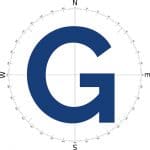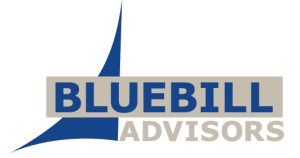Bitform Technology Inc. announced the availability of Bitform Extract SDK, a software component for high-performance access to the contents, including text, metadata and content structure information, of the most important file types used by global organizations. Cross platform support and a flexible API make Bitform Extract SDK a tool for a broad range of solutions that need access to file content. Target applications include analysis and inspection for security and compliance solutions and text extraction for indexing, categorization and other search, knowledge management and content management processes. On the surface, content extraction can be confused with “text filtering”. It’s a relatively simple task to develop a program that opens files and treats every element inside as text. This approach can produce impressive performance figures with regard to gigabytes of files processed per hour, but precision and accuracy suffer tremendously. Complex binary file formats such as Word, Excel, PowerPoint and PDF contain thousands of internal structures that can either be bypassed by a simple text filter – thus causing incomplete analysis of content – or can be incorrectly treated as text – thereby producing false positives. Bitform’s approach of completely modeling supported file types and taking into account the unique structure of specific formats produces high precision with performance that meets market needs in multiple application segments. For security, policy and compliance applications, Bitform Extract SDK can be combined with Bitform’s metadata and hidden information inspection tool, Bitform Secure SDK, to provide a comprehensive content extraction, inspection and remediation solution. Bitform Extract SDK is available immediately. http://www.bitform.net
Category: Content technology news (Page 244 of 640)
Curated information technology news for content technology, computing, and digital experience professionals. News items are edited to remove hype, unhelpful jargon, iffy statements, and quotes, to create a short summary — mostly limited to 200 words — of the important facts with a link back to a useful source for more information. News items are published using the date of the original source here and in our weekly email newsletter.
We focus on product news, but also include selected company news such as mergers and acquisitions and meaningful partnerships. All news items are edited by one of our analysts under the NewsShark byline. See our Editorial Policy.
Note that we also publish news on X/Twitter. Follow us @gilbane
Quadralay Corporation and XyEnterprise announced a strategic partnership that will combine XyEnterprise’s Content@ software with Quadralay’s WebWorks AutoMap. These technologies streamline business processes, providing information-management capabilities and automated online publishing for midsize and large Adobe FrameMaker and Microsoft Word authoring groups. XyEnterprise’s Content@ is a content management application that manages structured and unstructured content as whole documents or reusable components that can then be shared across multiple delivery channels. With FrameMaker Application Interfaces, content developers, managers and publishers have instant connectivity between Adobe FrameMaker and Content@. Additional support for FrameMaker’s “Book” format means any FrameMaker document can be tracked and versioned within the Content@ application. Content@ also supports many Microsoft products and has several new offerings that support Microsoft’s “XML” based applications. WebWorks AutoMap streamlines the traditional ePublishing process by extending control over formatting, look and feel, and content targeting. The joint solution is immediately available. ,
Altova announced that Altova XMLSpy 2006 includes full support for the newly released Microsoft Visual Studio 2005. From directly within the Visual Studio 2005 development environment, developers can access the functionality of XMLSpy 2006 to build XML-based applications. In addition to Visual Studio 2005
integration, the new 2006 version contains updated XSLT 2.0, XPath 2.0, and XQuery support in compliance with the latest World Wide Web Consortium (W3C) Working Drafts released on September 15, 2005, as well as schema-awareness in its XSLT 2.0 and XQuery engines. Similar to its support for Microsoft Visual Studio .NET 2003, XMLSpy 2006 provides “deep” integration with Visual Studio 2005. This gives Microsoft developers seamless access to the editing views and
development tools of XMLSpy 2006 in the same environment where they develop .NET Framework-based applications. XMLSpy 2006 is currently available for purchase in both Professional and Enterprise Editions with (USD) prices for a single-user license starting at $499 and $999 respectively. Customers with a valid Altova
Support and Maintenance Package (SMP) are eligible to update to XMLSpy 2006 software free of charge. http://www.altova.com
Open Text Corporation (TSX:OTC)(NASDAQ:OTEX) said it has committed to offering Open Text’s Artesia Digital Asset Management (DAM) solution for Microsoft SQL Server 2005 database platform. To facilitate deployment of the combined solution, Microsoft has developed the SQL Server Migration Accelerator (SSMA) tool, software that accelerates the migration of back-end data to the Microsoft SQL Server 2005 platform. The SSMA tool reduces the cost and time required for analysis, migration and follow-up testing, streamlining the transition of customers’ DAM solutions to the SQL Server platform. The Open Text Artesia Digital Media Group helps customers address the growing competitive and regulatory pressures to improve the management of digital media content. This group also leads Open Text’s horizontal strategy for digital media as a key component of ECM, and champions the unique ECM requirements of media companies worldwide. Open Text anticipates an accelerated initial rollout of solutions in calendar Q1, 2006. http://www.opentext.com
Translations.com and FatWire Software announced the debut of a combined product offering to eliminate barriers to cooperation between global resources. The integration of these two products provides a collaboration-based solution for localizing global content into multiple languages. The two companies partnered to develop the FatWire Adaptor for GlobalLink, which embeds GlobalLink functionality in Content Server. From within the Content Server interface, users can identify which assets need to be sent out for localization and keep track of the progress of previously localized assets to facilitate updates and revisions. Assets requiring localization are automatically extracted from Content Server and routed to the appropriate user for localization. Upon completion of localization tasks, GlobalLink reinserts the asset into the appropriate place in Content Server. The solution provides workflow integration so that a localization task can be added to one or more existing workflows in FatWire Content Server. Then, whenever an asset reaches that workflow task, it will be sent out for localization through GlobalLink. Upon the return of the localized version of the asset, GlobalLink will initiate a configured workflow. http://www.fatwire.com, http://www.translations.com
Interwoven, Inc. (NASDAQ:IWOV) announced the introduction of a Japanese version of its Document Management offering based on Interwoven WorkSite MP software. Enterprises that conduct business in Japan can ensure the broad adoption of document management company-wide; business professionals who utilize the system in Japanese can still collaborate and share with colleagues in other countries who may speak different languages. Other languages currently supported by Interwoven Document Management include: English, French, German, and Spanish. The Japanese version of Interwoven’s Document Management offering is available now.
Percussion Software announced that it has formed a strategic partnership with Ephox, provider of XML and XHTML authoring tools for enterprises. At the same time, Percussion introduced Rhythmyx 5.7, the newest version of its Enterprise Content Management System. Rhythmyx 5.7 provides new content creation/editing and analysis tools, features a new cross-platform rich text editor, EditLive! for Java 5.0 from Ephox, which offers content authoring capabilities, international language support and accessibility features for Section 508 compliance. EditLive! for Java 5.0, is certified on all Rhythmyx-supported browsers and platforms – including Netscape, Internet Explorer and Firefox for Windows and Safari for Mac. Rhythmyx 5.7 also adds Content Lifecycle Analysis, a capability that allows Web site managers to track and analyze content as it proceeds through the production lifecycle. http://www.percussion.com, http://www.ephox.com
Verity Inc. (NASDAQ:VRTY) announced it has signed a definitive agreement to be acquired by Autonomy Corporation plc for approximately $500 million, or $13.50 per share. Shareholder directors and executive officers of Autonomy and Verity have agreed to vote shares they own in favor of the acquisition. The all-cash transaction, which requires shareholder approval, is expected to close in late 2005/early 2006 and is subject to customary regulatory closing conditions. When the transaction is closed, the combined entity will be branded Autonomy and maintain global headquarters in Cambridge, England while Verity will become the base for U.S. operations. Dr. Mike Lynch, Autonomy’s group CEO and co-founder will continue as CEO of the expanded group. Anthony J. Bettencourt, CEO of Verity, will assume the role of CEO, Autonomy, Inc., the company’s U.S. unit. Once completed, this transaction is expected to be earnings enhancing (before any amortization of intangible assets) to Autonomy in the first full quarter following completion.

